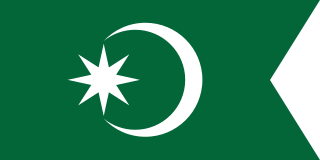 W
WHerzegovina is the southern and smaller of two main regions of Bosnia and Herzegovina, other being Bosnia. It never had strictly defined geographical or cultural-historical borders, nor has it ever been defined as an administrative whole in the geopolitical and economic subdivision of Bosnia and Herzegovina.
 W
WThe Church of Saint George, Sopotnica is a Serbian Orthodox church located at the village of Sopotnica in the Municipality of Novo Goražde in eastern Republika Srpska, Bosnia and Herzegovina. The church stands at the left bank of the Drina River, 4 kilometres from the town of Goražde. It was built in 1454 by Stefan Vukčić Kosača, when Goražde was part of a region ruled by him. The region would later come to be known as Herzegovina, after Kosača's title Herceg of Saint Sava. Herzegovina was gradually conquered by the Ottoman Empire between 1465 and 1481.
 W
WThe Eyalet of Herzegovina was an Ottoman eyalet from 1833 to 1851. Its last capital was Mostar.
 W
WThe Herzegovina uprising was an uprising led by Christian population, mostly Serbs, against the Ottoman Empire, firstly and predominantly in Herzegovina, from where it spread into Bosnia and Raška. It broke out in the summer of 1875, and lasted in some regions up to the beginning of 1878. It was followed by the Bulgarian Uprising of 1876, and coincided with Serbian-Turkish wars (1876–1878), all of those events being part of the Great Eastern Crisis (1875–1878).
 W
WThe Miloradović or Hrabren (Храбрен) or later Stjepanović (Стјепановић), were a noble family of Serbian ethnicity and a katun clan from Hum, parts of present-day of Herzegovina,.. They were Eastern Orthodox Christians but some branches converted to Islam. The members of the family served the Kingdom of Bosnia, Russian Empire, Republic of Ragusa, Ottoman Empire.
 W
WOld Herzegovina is a historical region, covering eastern parts of historical Herzegovina, outside the scope of modern Herzegovina. Major section of Old Herzegovina belongs to modern Montenegro, while minor section belongs to modern Serbia. The term also refers to former Herzegovinian regions in Upper Podrinje, in Bosnia and Herzegovina. All of those regions were parts of historical Herzegovina from the middle of the 15th century until 1878.
 W
WThe SAO of Herzegovina was a self-proclaimed Serbian Autonomous Oblast within today's Bosnia and Herzegovina. It was proclaimed by the Assembly of the Association of Municipalities of Bosnian Krajina in 1991 and was subsequently included into Republika Srpska. SAO Herzegovina was located in the geographical region of Herzegovina. It was also known as SAO Eastern Herzegovina.
 W
WThe Serb uprising of 1596–1597, also known as the Herzegovina uprising of 1596–1597, was a rebellion organized by Serbian Patriarch Jovan Kantul and led by Grdan, the vojvoda ("duke") of Nikšić against the Ottomans in the Sanjak of Herzegovina and Montenegro Vilayet, during the Long Turkish War (1593–1606). The uprising broke out in the aftermath of the failed Banat Uprising in 1594 and the burning of Saint Sava's relics on April 27, 1595; it included the tribes of Bjelopavlići, Drobnjaci, Nikšić, and Piva. The rebels, defeated at the field of Gacko in 1597, were forced to capitulate due to a lack of foreign support.